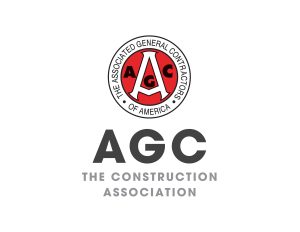PART 2│Our Nation’s Highways: Gridlock Adds to Funding Woes
In our last post, we talked about funding challenges that are making it difficult, if not impossible, to adequately address our nation’s crumbling highway infrastructure. But money isn’t the only problem. In this post, we’ll take a look at how the process of getting highway projects reviewed and approved is dragging things out and driving up costs.
 13 years? Really?
13 years? Really?
Did you know that the average time from concept to completion for highway construction projects in this country is 13 years? That’s not the longest ever recorded, it’s the average.
Some industry watchers say it can take up to 19 years.
The longer it takes, the more it costs. Costs go up over time, and roadways continue to deteriorate and become more congested during the years of review, driving costs up further. Getting projects off the drawing board and moving toward completion puts more people to work and puts critical new projects into the highway system sooner, to help alleviate traffic congestion and wear and tear.
MAP-21 might be a step in the right direction.
In 2012, Congress passed MAP-21, formally known as the Moving Ahead for Progress in the 21st Century Act. It was a funding and authorization package for federal surface transportation projects, designed at least in part to speed up the process of actually getting work finished.
In particular, it shortened the environmental review process by setting a four-year cap on any given review effort and by expanding the list of projects that could be categorically excluded from environmental review – projects with little impact, such as creating rights of way or placing poles along rights of way.
MAP-21 also address the other major delay-causing factor, interagency coordination. Typically, as many as a dozen agencies have a specific interest in any new project, and they all get to undertake their own review. That means a project could be examined – separately, and not necessarily concurrently – by the Environmental Protection Agency, the Army Corps of Engineers, the Fish and Wildlife Service and others, including the Bureau of Indian Affairs, should there be an indication (or possibility) the project incorporates ancient burial grounds.
Although one agency is designated as the lead, any agency can hold up the process almost indefinitely. Just getting consensus on the project’s scope can be a drawn-out affair, and even the lead agency doesn’t have the power to officially move the process forward. Sometimes projects wind up in litigation, which causes further delay.
The construction industry wants a more businesslike approach.
 Brian Turmail, with the Associated General Contractors of America (AGC), advocates for streamlining the entire process. He says there should be clear rules that govern review of all infrastructure projects, and firm deadlines that apply to any agency involved. Agencies that don’t make the deadline would automatically be removed from the process. Turmail says the AGC wants to see further refinement of environmental exclusion, too, because although MAP-21 expanded the list of eligible exclusions, approval can still take a year or two. Other industry watchers note many provisions in MAP-21 aren’t mandatory, but optional, further weakening the reforms.
Brian Turmail, with the Associated General Contractors of America (AGC), advocates for streamlining the entire process. He says there should be clear rules that govern review of all infrastructure projects, and firm deadlines that apply to any agency involved. Agencies that don’t make the deadline would automatically be removed from the process. Turmail says the AGC wants to see further refinement of environmental exclusion, too, because although MAP-21 expanded the list of eligible exclusions, approval can still take a year or two. Other industry watchers note many provisions in MAP-21 aren’t mandatory, but optional, further weakening the reforms.
Philip Howard of Common Good suggests four ways to reduce environmental review delay:
- Giving the EPA authority to make unilateral decisions, including defining project scope.
- Tightly limiting litigation.
- Congressional establishment of a one-stop lead agency, probably the Department of Transportation, to oversee the entire process.
- Enforcing concurrent review by multiple agencies.
Social accountability is important and necessary, Howard says. But so are new roads. Cutting the review process for highway construction projects from many years to around 18 months would save money, reduce frustration and keep freight moving along our roadways in a timely and safely manner.
